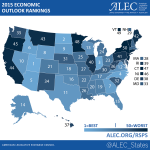China has been aggressive in the region of the South China sea over island disputes and territory ownership. This was part in parcel the cause of the Obama administration Asia pivot. In recent years, China has become much more assertive in their military investments and power in that region. But building new islands is making the West very nervous as well as S. Korea, Vietnam, Philippines and Japan. No one is really speaking to this build-up.
Beijing Shocks US With Unbelievable Progress of Airstrip in South China Sea
New satellite imagery shows the extent of China’s construction of artificial islands in the South China Sea. Fiery Cross Reef could soon serve as a military-grade runway in the middle of the ocean. And despite its own military presence in the region, US officials are in panic.
Dredging sand from the seafloor, the Chinese government has been steadily building artificial landmasses atop sunken reefs in the Spratly Islands archipelago. In part, the islands will be used to bolster emergency response in the region. But Beijing also says the islands will be used as military defense posts, which worries officials in Washington, already concerned about a growing Chinese influence.
Images obtained by IHS Jane’s Defense Weekly from Airbus Defence and Space show just how rapid the island growth has been. With construction beginning only last year, Fiery Cross Reef is now home to China’s first airstrip in the South China Sea. With 503 metered already paved, the runway could be as long as 3,000 meters once completed. That’s long enough to support heavy military transport planes and fighter jets, according to Washington’s Center for Strategic and International Studies.

Existing People’s Liberation Army Air Force runways on the mainland range in length from 2,700 meters to 4,000 meters.
Satellite imagery also shows that a second 3,000 meter airstrip could be in the works on Subu Reef, another island being built in the archipelago.
Fiery Cross will also host a large seaport on the island’s southwest end. Imagery shows floating crane fortifying sea walls with concrete.
For US officials already concerned about the island construction, the existence of runways has reinvigorated those fears.
“The United States has a strong interest in preservation of peace and security in the South China Sea,” a spokesman for the US State Department said, according to Reuters. “We do not believe that large-scale land reclamation with the intent to militarize outposts on disputed land features is consistent with the region’s desire for peace and stability.”
But despite this supposed interested in “peace,” the US military has steadily increased its own presence in the region. In February, the US Navy admitted that it was flying its most advanced spy plane – the P-8A Poseidon – out of the Philippines to monitor the region.
Washington has also organized a series of war exercises with allied nations in the South China Sea. Earlier this month, the US and Indonesia participated in joint military exercises, in a move which was seen by some as a warning against Chinese expansion. Another series of war games conducted between the US and the Philippines will begin next week. Known as the Balikatan, the drills are “designed to increase our capability to defend our country from external aggression,” military spokesman Lieutenant-Colonel Harold Cabunoc told Reuters.
While publicly decrying China’s island construction as “aggressive,” US Senator John McCain, chairman of the Senate Armed Services Committee, has called on the Obama administration to move more military resources into the Pacific.
Speaking before a seminar in Washington on Thursday, Cui Tiankai, China’s ambassador to the United States, defended Beijing’s right to install military defenses in its own territory. He said there “should be no illusion that anyone could impose on China unilateral status quo” or “repeatedly violate China’s sovereignty without consequences.”
He also noted that the UN’s Convention on Law of the Sea forbids the United States from conducting “intensive and close-range reconnaissance in other countries’ exclusive economic zone.”
The South China Sea is a hotly debated stretch of water through which nearly $5 trillion in trade passes each year. While China argues that most of the area is its own territory, the Philippines, Malaysia, Vietnam, Taiwan, and Brunei also make overlapping claims.




